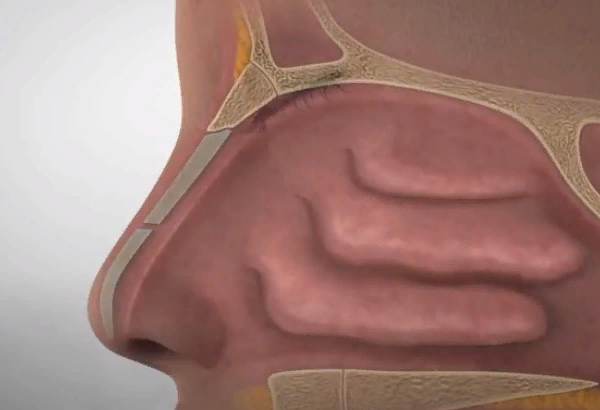Nickel allergy is a common cause of allergic contact dermatitis, affecting millions worldwide. But how do you know if you’re allergic to nickel? Here, we’ll break it down with expert-backed insights, answering essential questions to help you identify, understand, and manage this condition.
Common Sources of Nickel in Everyday Life
What Is Nickel Allergy?
Nickel allergy is a hypersensitive reaction of your immune system to nickel. It typically manifests as contact dermatitis when your skin comes into prolonged contact with nickel-containing items. Think jewelry, belt buckles, or even everyday items like keys and cell phones.
Interestingly, about 10-20% of the population suffers from nickel sensitivity, making it one of the most prevalent skin allergies. While genetic predisposition plays a role, frequent exposure to nickel-containing objects increases the risk.
What Are The Symptoms?
Nickel allergy symptoms typically appear within 12 to 48 hours after exposure and include:
- Redness and Itching: These are the most common symptoms and often appear on areas like the wrists or neck where jewelry is worn. For example, people wearing watches or bracelets with nickel may notice persistent redness or irritation.
- Rash or Blisters: Often found where the skin touches the nickel item, such as under earrings or on the waistline from belt buckles. These can be small, raised bumps or fluid-filled blisters.
- Dry or Cracked Skin: Prolonged exposure, like holding keys or using a nickel-containing cell phone case daily, can lead to severe dryness or cracked skin.
- Swelling: Particularly noticeable in areas like the earlobes after wearing earrings, or fingers when handling coins for extended periods.
Symptoms Distribution in Nickel Allergy Cases
| Symptom | Percentage (%) |
|---|---|
| Redness and Itching | 85% |
| Rash or Blisters | 75% |
| Dry or Cracked Skin | 60% |
| Swelling | 50% |
Did You Know?
Nickel is not only in jewelry but also found in clothing fasteners, eyeglass frames, and even certain foods like nuts and chocolate. Avoiding these sources can significantly reduce your exposure. [Source: American Academy of Dermatology]
How Can You Test for Nickel Allergy?
Patch Testing: The Gold Standard
Dermatologists often recommend a patch test. Here’s how it works:
- Nickel is applied to a small patch that sticks to your skin, usually on the upper back or inner forearm. The patch contains a small dose of nickel to minimize discomfort during testing.
- The patch is left for 48 hours, during which you should avoid activities that cause excessive sweating or might dislodge the patch, such as intense workouts or long showers.
- After removal, your skin is observed for reactions like redness, swelling, or small blisters at the application site. If a noticeable reaction occurs, it confirms an allergic sensitivity to nickel.
A positive reaction confirms your allergy. This non-invasive test is highly reliable and widely used.
At-Home Testing: Is It Reliable?
You can also perform an at-home test using a nickel detection kit. While it won’t diagnose an allergy, it can help identify nickel-containing items in your environment.
What Are The Most Common Sources of Nickel?
Nickel is everywhere, which makes avoiding it a challenge. Here are some frequent culprits:
| Item | Nickel Presence |
|---|---|
| Jewelry | High |
| Belt Buckles | Moderate |
| Coins | High |
| Keys | Moderate |
| Cell Phones | High |
Foods High in Nickel
Some foods naturally contain nickel, which can trigger symptoms in severe cases:
- Nuts and Seeds
- Chocolate
- Soy Products
- Certain Vegetables (e.g., spinach, beans)
Nickel-containing foods are more likely to affect individuals who are already sensitized through skin contact.
Who Is Most At Risk?
- Office Workers: Individuals who frequently handle coins or metallic objects, such as cashiers, may notice worsening skin reactions after consuming high-nickel foods like chocolate or spinach.
- Factory Workers: Those working in industries where they are exposed to nickel alloys, such as manufacturing or welding, are at increased risk of nickel sensitivity over time.
- Cooks and Chefs: Handling nickel-plated utensils, pots, or pans daily can lead to prolonged exposure, increasing sensitivity.
- People with Systemic Nickel Allergy Syndrome (SNAS): Often stemming from occupational exposure, these individuals may experience both gastrointestinal discomfort and skin symptoms after consuming foods like nuts, seeds, or soy products.
Pro Tip:
Switch to stainless steel or hypoallergenic alternatives for everyday items like utensils and earrings. Many modern manufacturers also offer nickel-free options.
How Can You Manage Nickel Allergy?
Topical Treatments
- Hydrocortisone Creams: Reduce inflammation and itching.
- Emollients: Keep the skin moisturized to repair the barrier.
Lifestyle Adjustments
- Avoid Direct Contact: Opt for nickel-free jewelry and accessories.
- Protective Coatings: Use nail polish or a protective sealant on objects like belt buckles.
- Dietary Adjustments: If you have systemic nickel sensitivity, consult a dietitian about low-nickel diets.
Did You Know?
Hypoallergenic products are not always nickel-free. Always check the product label or test the item with a nickel detection kit.
Can Nickel Allergy Get Worse Over Time?
Yes, repeated exposure can worsen symptoms. Known as “sensitization,” this phenomenon occurs when the immune system becomes increasingly reactive to nickel. Over time, even brief contact with nickel can trigger a reaction.
Progression of Symptoms Over Time with Repeated Exposure
| Exposure Level | Severity of Symptoms (%) |
|---|---|
| Initial Contact | 25% |
| Repeated Contact | 50% |
| Prolonged Exposure | 75% |
| Chronic Contact | 90% |
When Should You See a Doctor?
Consult a dermatologist if:
- Over-the-counter treatments fail to control symptoms.
- The rash spreads or becomes infected.
- You suspect severe nickel sensitivity due to dietary sources.
Doctors may prescribe stronger treatments like topical steroids or antihistamines and offer tailored advice on managing your condition.
Editorial Advice
If you suspect a nickel allergy, avoid prolonged exposure to nickel-containing items and consult a dermatologist for a definitive diagnosis. Prevention is the key to managing this condition, as it significantly reduces flare-ups and improves quality of life. Invest in hypoallergenic products and educate yourself about hidden nickel sources to stay ahead of potential triggers.
About the Author
Reyus Mammadli is the author of this health blog since 2008. With a background in medical and biotechnical devices, he has over 15 years of experience working with medical literature and expert guidelines from WHO, CDC, Mayo Clinic, and others. His goal is to present clear, accurate health information for everyday readers — not as a substitute for medical advice.







